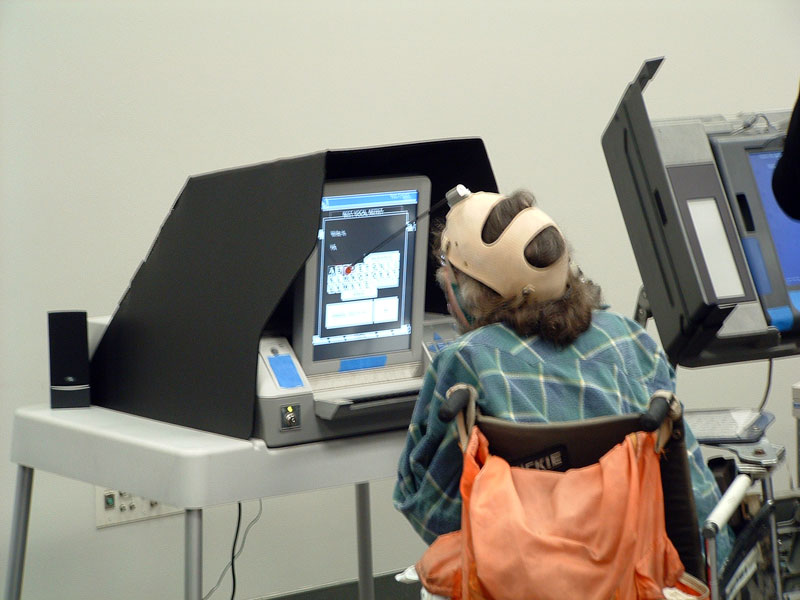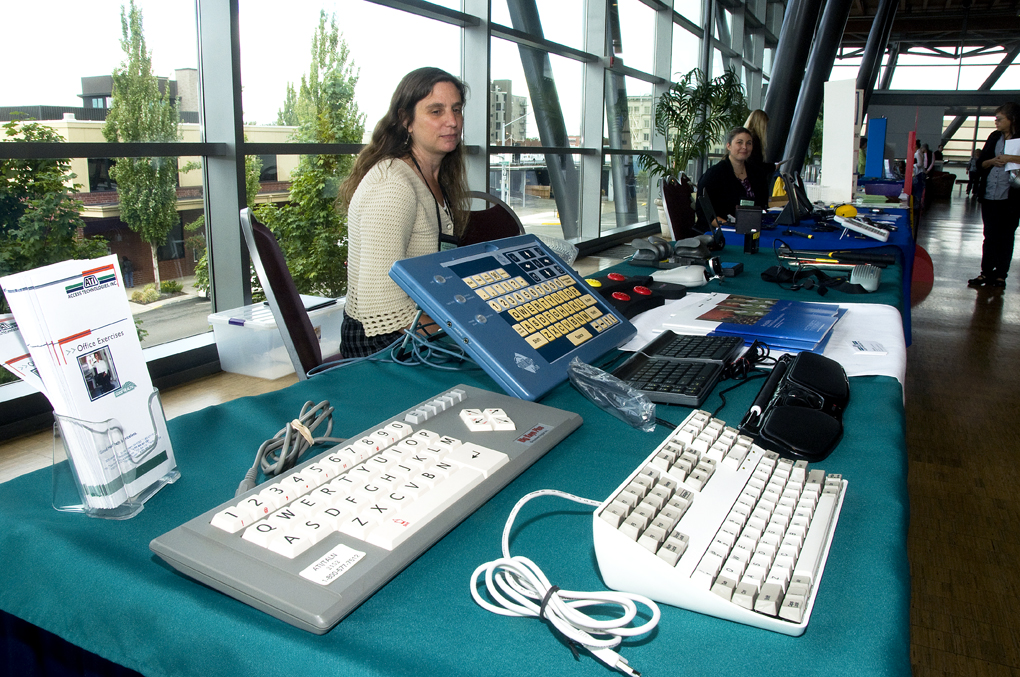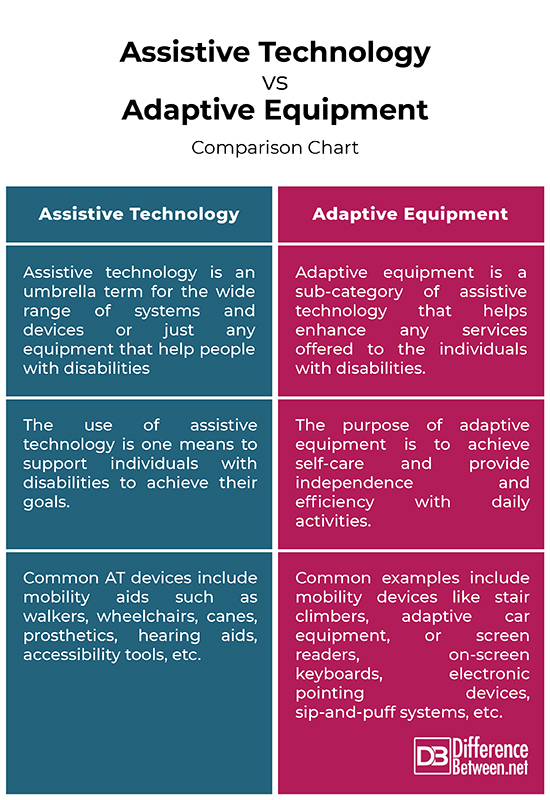Difference Between Assistive Technology and Adaptive Equipment
Disability is a socially constructed phenomenon that has its own barriers. It is generally defined as a condition that restricts an individual’s daily activities. Disability can have some serious consequences on individual’s personal life and they have a greater likelihood of being under- or un-employed. Not to mention the impact on the family of the individuals with disabilities. Individuals with disabilities are likely to experience physical, mental and financial burden. Assistive Technology is one great opportunity for such people to leverage technology to meet their everyday needs with little or no assistance. Technology is a ubiquitous part of our life which makes our life much easier than without them. So, assistive technology is like a helping hand for those in need. Adaptive equipment is no different and helps people with disabilities get through the day without any assistance.

What is Assistive Technology?
Assistive technology is an umbrella term for the wide range of systems and devices or just any equipment intended to help people with disabilities. Today, disability has been deeply threaded into our society. Disability not only affects the individual’s physical well-being and financial health, but also put a mental stress on the family trying to provide care and attention. Assistive technology makes the life of such people a little better. The devices are more like mobility aids such as walkers, wheelchairs, canes, prosthetics, or even hearing aids, which assist these individuals with their daily activities. Assistive technology is an opportunity that is necessary to minimize the disability and helps improve functional capabilities of individuals with disabilities. The key point is the technology and a tangible object that can be used by a person with disability. It is inclusive of mainstream technologies and anything that is developed specifically for individuals with some kind of impairment or disability.

What is Adaptive Equipment?
Adaptive equipment is a sub-category of assistive technology that helps enhance any services offered to the individuals with disabilities. Adaptive technology has already contributed much to society in general, particularly the way we communicate with each other. This includes persons with hearing impairment or just any disability. Just like assistive technology, adaptive equipment refers to devices that help people with disabilities with activities of daily living such as bathing, dressing, feeding equipment, back scrubbing, shoe tie assistance, or anything to get through the day. For example, mobility devices like stair climbers and adaptive car equipment allow a person with limited mobility to get around with ease or without any assistance. Speech recognition, for one, is a powerful adaptive technology that assists people with motor disabilities. The sole purpose of adaptive equipment is to achieve self-care and provide efficiency with daily activities.
Difference between Assistive Technology and Adaptive Equipment
Meaning
– Assistive technology, as the name suggests, refers to a wide variety of technological devices inclusive of mainstream technologies that assist people with disabilities do their daily work. Adaptive equipment is a sub-category of assistive technology that helps enhance any services offered to the individuals with disabilities. Assistive technology can be hardware as well as software intended for people with disabilities to make their life easier than without it. Assistive technology can be devices that provide physical assistance or can be mobility aids or adaptive equipment to help people with motor disabilities.
Purpose
– Assistive technology is one of the opportunities that is necessary to minimize the disability and helps improve functional capabilities of individuals with disabilities. On the software side, assistive technology helps people with physical limitations get through the day without any assistance. Assistive technology plays a significant role in educating students with disabilities. Some examples include text to speech, speech to text, voiceover, sip-and-puff systems, proofreading software, etc. The sole purpose of adaptive equipment is to achieve self-care and provide independence and efficiency with daily activities.
Examples
– Common examples of assistive technology include mobility aids such as walkers, wheelchairs, canes, prosthetics, or even hearing aids, which assist individuals with disabilities with their daily activities. Computer programs such as speech recognition, screen readers, display enhancement tools, etc. are great for people with mobility disabilities. Some examples of games or sports that can be modified accordingly range from wheelchair bowling, kayaking, and biking to elite Paralympic games. In fact, there’s a wide range of devices that help sport enthusiasts with disabilities stay in the game. In fact, there are tons of options for such people to enjoy adaptive sports.
Assistive Technology vs. Adaptive Equipment: Comparison Chart

Summary
In a nutshell, any device, hardware or software, or just any technology that assist people with disabilities can be recognized as an assistive technology. It can be anything, from mobility aids such as wheelchairs, walkers, prosthetics, etc. to computer programs such as speech recognition, screen readers, display enhancement tools, and more. Adaptive equipment is a subcategory of assistive technology that helps people with disabilities with activities of daily living such as bathing, dressing, feeding, etc. Well, the purpose is same – to achieve self-care and provide efficiency with daily activities. Assistive technology is a broad term that includes adaptive equipment and more.
- Difference Between Caucus and Primary - June 18, 2024
- Difference Between PPO and POS - May 30, 2024
- Difference Between RFID and NFC - May 28, 2024
Search DifferenceBetween.net :
Leave a Response
References :
[0]Cook, Albert M. and Janice Miller Polgar. Assistive Technologies: Principles and Practice. Amsterdam, Netherlands: Elsevier, 2014. Print
[1]Brhel, Susan. Therapeutic Activities & Successful Aging: A Guide for Seniors, Families and Caregivers. New York, United States: Goals Seminars & Consultants, 2006. Print
[2]Lazzaro, Joseph J. Adaptive Technologies for Learning and Work Environments, Second Edition. Chicago, United States: American Library Association, 2001. Print
[3]Image credit: https://en.wikipedia.org/wiki/File:Head-wand.jpg
[4]Image credit: https://commons.wikimedia.org/wiki/File:Assistive_devices_(6235420475).jpg
